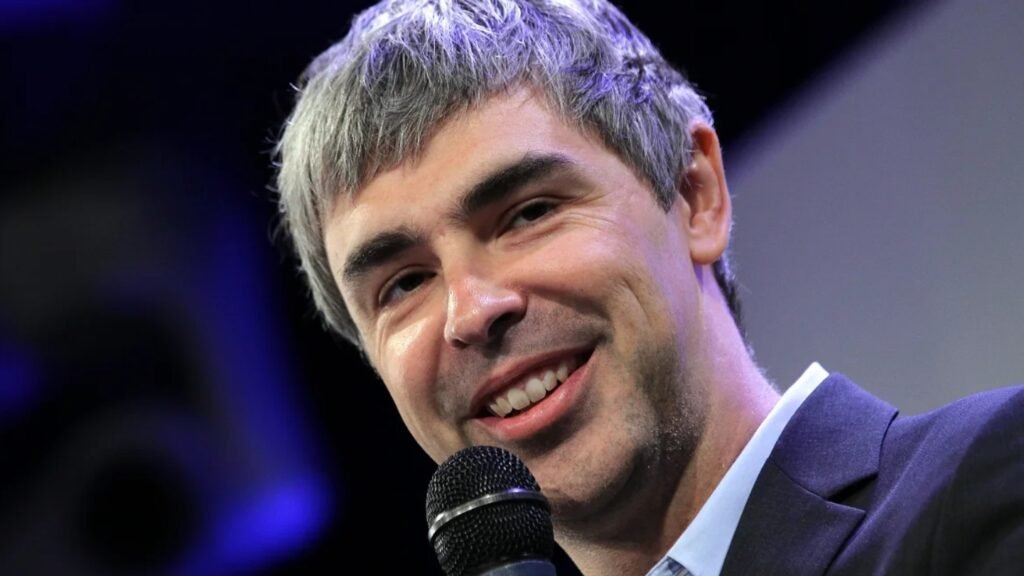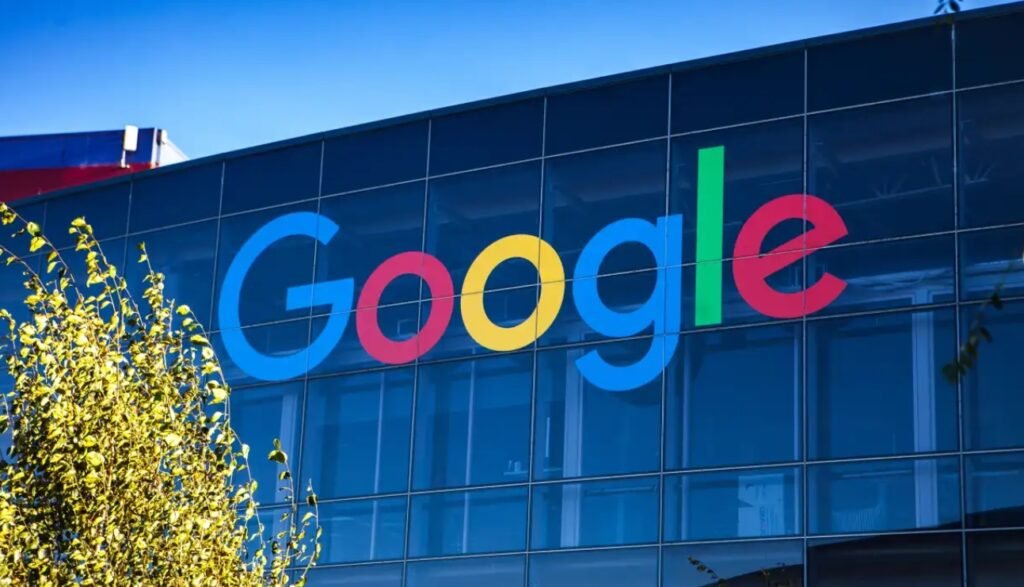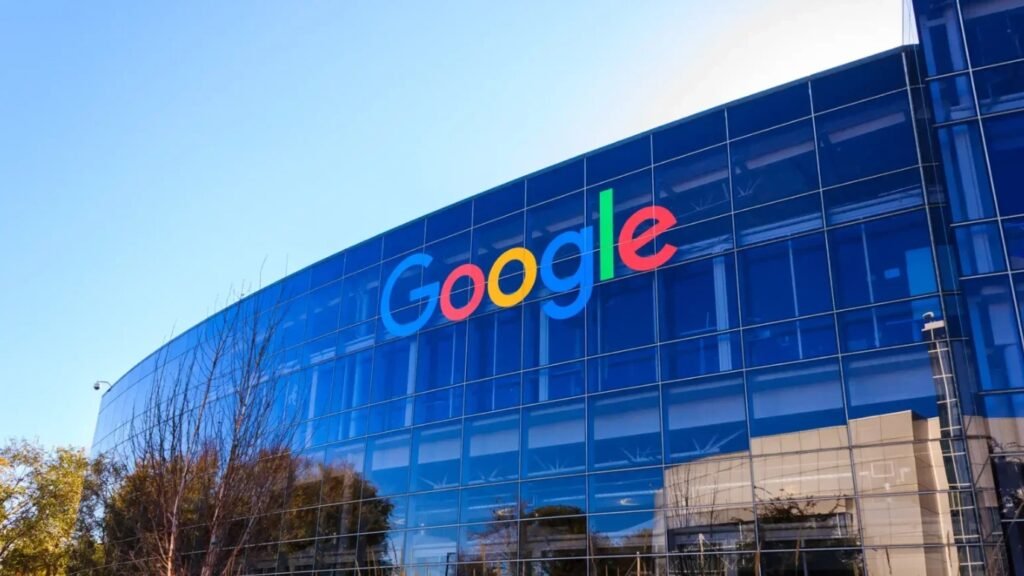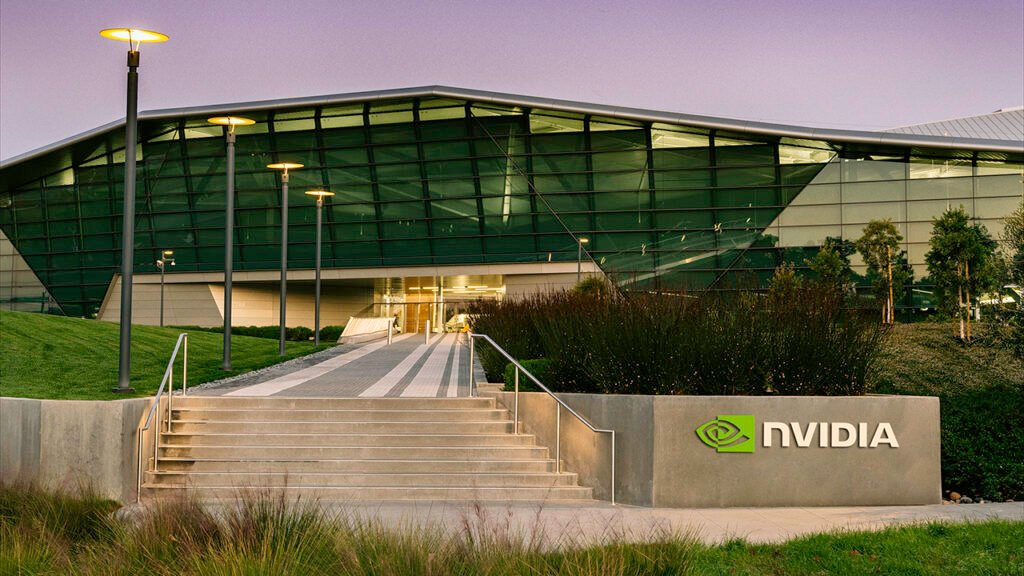Introduction
Google, now a global technology powerhouse, started as a research project and has since transformed how the world accesses information. From its inception in the late 1990s to its current status as a leading force in search, advertising, cloud computing, and more, Google’s journey is a fascinating tale of innovation, ambition, and continuous evolution. This article explores Google’s history, from its founding to the present day.
Founding and Early Years (1995-2004)
Origins of the Idea

Google’s story begins in 1995 at Stanford University, where Larry Page and Sergey Brin, both Ph.D. students in computer science, met for the first time. Despite initial disagreements—Page found Brin “obnoxious,” and Brin thought Page was “arrogant”—they soon discovered a shared interest in extracting meaningful information from vast datasets, particularly the web. Their combined expertise in computer science and mathematics laid the foundation for their collaborative work.

Larry Page, the son of computer science pioneers, had always been fascinated by technology. He was intrigued by the idea of understanding the structure of the web and how web pages linked to each other. Sergey Brin, who immigrated to the United States from the Soviet Union, had a keen interest in data mining and information retrieval. Their mutual curiosity and complementary skills proved to be a perfect match.
The Birth of Backrub

In January 1996, Page and Brin embarked on a research project they called “Backrub.” This project aimed to develop a new type of search engine that analyzed the web’s link structure to determine the importance of individual pages. The idea was revolutionary: instead of simply counting how many times a search term appeared on a page, Backrub would evaluate the significance of the pages linking to it.
The concept was inspired by Page’s interest in citations within academic papers. He realized that the more a paper was cited, the more important it was considered within the academic community. Applying this principle to the web, Page and Brin developed the PageRank algorithm, which ranked web pages based on the quantity and quality of links pointing to them. This approach promised to deliver more relevant search results than existing methods.
Development and Early Challenges
The development of Backrub began in earnest. Page and Brin used Stanford’s infrastructure, including the university’s computers, to crawl the web and build their index. They initially stored the data on inexpensive hard drives, often buying the cheapest models available due to budget constraints. Their first server was housed in Larry Page’s dorm room, and they created their initial index using low-cost hardware and software.
One of their key challenges was managing the vast amount of data they were collecting. The web was growing rapidly, and Backrub needed to scale to handle millions of web pages. To address these issues, Page and Brin developed innovative data storage and retrieval techniques, including using multiple servers to distribute the workload.
As Backrub improved, it began to attract attention within the academic community at Stanford. Page and Brin presented their work at conferences and received positive feedback, encouraging them to continue refining their search engine. However, they soon realized that their project had commercial potential far beyond academia.
Transition to Google

By 1997, Backrub had evolved significantly, and Page and Brin decided it needed a new name. They brainstormed various options, eventually settling on “Google,” a play on the mathematical term “googol,” which signifies a 1 followed by 100 zeros. This name reflected their mission to organize an immense amount of information and make it universally accessible and useful.
In September 1998, they officially incorporated Google Inc. They did this in a friend’s garage in Menlo Park, California, which became the company’s first office. The initial investment came from Andy Bechtolsheim, co-founder of Sun Microsystems, who was so impressed with their idea that he wrote a $100,000 check to “Google Inc.” even before the company was legally incorporated. This early support was crucial, providing the financial backing needed to move from the university to a dedicated office space.
Early Development and Challenges
In the early days, Google’s team was small but highly talented. Craig Silverstein, Google’s first employee, joined the team and played a critical role in developing the company’s core infrastructure. The team worked tirelessly from their modest garage office, driven by a shared vision of making the world’s information accessible and useful.
Despite their initial success, Page and Brin faced significant challenges. Funding was always a concern, and they struggled to convince investors of the potential of their search engine. Many venture capitalists were skeptical of their business model and doubted whether search engines could generate substantial revenue. However, Page and Brin remained undeterred, believing in the transformative power of their technology.
In 1999, their persistence paid off when Google secured $25 million in venture capital funding from Sequoia Capital and Kleiner Perkins. This investment allowed Google to expand its operations, hire more employees, and move to a larger office in Palo Alto. The funding also enabled them to invest in the infrastructure needed to support their growing user base.
The Early Years of Google

Google’s early years were marked by rapid innovation and growth. The company’s minimalist homepage, devoid of the clutter typical of other search engines, quickly set it apart. The clean interface, combined with superior search results, attracted a growing user base. By 2000, Google had indexed over a billion web pages, becoming the largest search engine in the world.
In 2000, Google introduced AdWords, an online advertising service that allowed businesses to display ads based on search queries. AdWords used a pay-per-click model, where advertisers paid only when users clicked on their ads. This innovation transformed Google’s business model, making it profitable and setting the stage for future growth.
Google continued to innovate with the launch of new products and features. In 2001, they introduced Google Images, allowing users to search for images on the web. This was followed by Google News in 2002, which aggregated news stories from around the web and organized them based on user interests.
By the early 2000s, Google had established itself as a major player in the tech industry. Its rapid growth and innovation attracted significant media attention and further investment, paving the way for its eventual IPO in 2004.
Expansion and Diversification (2004-2015)
Going Public and Initial Success

Google’s growth trajectory accelerated with its initial public offering (IPO) in August 2004, raising $1.67 billion and valuing the company at $23 billion. The IPO provided the capital needed to invest in new projects and acquisitions, setting the stage for future growth.
New Products and Acquisitions
In 2004, Google launched Gmail, offering 1GB of free storage, significantly more than competitors. Gmail’s success was followed by Google Maps in 2005, which revolutionized navigation with features like satellite imagery and Street View. In the same year, Google acquired YouTube for $1.65 billion, recognizing the growing importance of online video.
Google continued to innovate with products like Google Earth, Google Books, and Google Scholar, expanding its ecosystem and enhancing its users’ ability to access and interact with information.
Entering the Mobile Market

In 2005, Google acquired Android Inc., setting the stage for its entry into the mobile market. Android, an open-source operating system for mobile devices, was officially launched in 2008. Its flexibility and extensive app ecosystem helped it become the world’s most popular mobile OS, powering billions of devices globally.
Google also introduced the Nexus series of smartphones in 2010, showcasing the best of Android. This success paved the way for the Pixel series, launched in 2016, which featured high-end hardware and advanced photography capabilities.
The Alphabet Era
In August 2015, Google underwent a significant corporate restructuring, resulting in the formation of Alphabet Inc. This move, announced by Larry Page in a blog post titled “G is for Google,” aimed to streamline operations and allow the company to manage its diverse range of projects more effectively.
The restructuring created Alphabet as a parent holding company, with Google as its largest subsidiary. This change allowed each of Alphabet’s ventures, known as “Other Bets,” to operate independently, focusing on their unique goals and challenges.
Rationale Behind the Restructuring
The decision to restructure was driven by several factors. First, it provided greater transparency and accountability. By separating Google’s core businesses—search, advertising, and YouTube—from its more experimental projects, Alphabet could give each venture the focus and resources it needed to succeed.
Second, the restructuring allowed Google to streamline its operations and focus on its primary mission of organizing the world’s information. Meanwhile, Alphabet’s Other Bets, which include projects like Waymo (self-driving cars), Verily (life sciences), and Calico (longevity research), could pursue their goals with greater independence and less direct oversight from Google’s core business operations.
Third, the restructuring was designed to foster innovation by allowing each subsidiary to operate more like a startup. With their own leadership teams and resources, these ventures could make faster decisions and adapt more quickly to changes in their respective industries.
Expansion and Innovation under Alphabet (2015-Present)
Growth of Core Google Services

Under Alphabet, Google continued to expand and refine its core services. Google Search remained the most popular search engine globally, continually improving its algorithms and incorporating AI and machine learning to provide more relevant and personalized results. The introduction of features like Google Discover and enhancements to Google Assistant further solidified its dominance.
YouTube grew exponentially, becoming the world’s largest video-sharing platform and a significant revenue driver for Alphabet. The launch of YouTube Premium, YouTube Music, and YouTube TV expanded its offerings and provided additional revenue streams.
Google Cloud emerged as a major player in the cloud computing market, competing with Amazon Web Services (AWS) and Microsoft Azure. Significant investments in infrastructure, AI, and machine learning capabilities helped Google Cloud attract major enterprise customers and grow its market share.
Innovation in Hardware
Google’s hardware division also saw significant growth. The Pixel series of smartphones gained a reputation for high-quality cameras and seamless integration with Google services. Google Home smart speakers, later rebranded as Nest, became popular for their integration with Google Assistant, and the Nest lineup expanded to include smart thermostats, cameras, and other home automation products.
The launch of Google Stadia in 2019 marked Google’s entry into the gaming industry. Stadia, a cloud-based gaming service, aimed to revolutionize gaming by allowing users to stream games directly to their devices without the need for high-end hardware.
Other Bets and Future Technologies

Alphabet’s Other Bets continued to push the boundaries of technology and innovation. Waymo made significant strides in developing autonomous vehicles, conducting extensive testing and launching limited self-driving taxi services in select areas. Verily and Calico focused on healthcare and life sciences, working on projects ranging from disease prevention to extending the human lifespan.
Alphabet also invested in emerging technologies such as quantum computing through its subsidiary Google Quantum AI. In 2019, Google announced that its quantum computer, Sycamore, had achieved “quantum supremacy” by performing a calculation that would be impossible for classical computers.
Alphabet’s Approach to Sustainability
Alphabet has been a leader in sustainability, committing to ambitious environmental goals. Google became the first major company to achieve carbon neutrality in 2007 and has since continued to focus on renewable energy and reducing its carbon footprint. In 2020, Google announced plans to operate entirely on carbon-free energy by 2030, further solidifying its commitment to sustainability.
Challenges and Controversies
Antitrust and Privacy Issues

Despite its success, Google has faced numerous challenges and controversies. Antitrust investigations and lawsuits have been a significant concern, with regulators in the United States, Europe, and other regions scrutinizing Google’s market dominance and business practices. Issues such as the preferential treatment of Google’s own services in search results and the collection and use of user data have been at the forefront of these investigations.
Balancing Innovation and Responsibility
Google has also grappled with the challenge of balancing innovation with responsibility. The company’s involvement in controversial projects, such as the development of AI for military purposes and its work on a censored search engine for China, sparked internal and external debates about ethical practices and corporate responsibility.
Conclusion
From its humble beginnings as a research project at Stanford University, Google has grown into a global technology leader, continually pushing the boundaries of innovation. The formation of Alphabet Inc. marked a new chapter in the company’s history, allowing it to manage its diverse range of projects more effectively and fostering a culture of innovation.
As Google and Alphabet continue to evolve, they face both opportunities and challenges. The company’s commitment to innovation, sustainability, and ethical practices will play a crucial role in shaping its future and maintaining its position as a leader in the tech industry.
Subscribe Our 100% Free Newsletter


